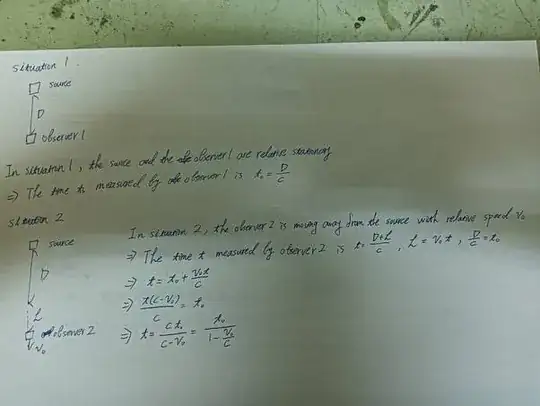I tried to derive the time deliation equation in different way,but I got a ridiculous result. Could somebody point out the problem in my derivation?
The derivation in situation 1 (stationary source & observer) is
"The source and the observer 1 are relatively stationary.So the time ${t_0}$ measured by the observer 1 is ${t_0}$=$\frac{D}{c}$"
The derivation in situation 2 (stationary source & moving observer) is
"The observer 2 is moving away from the source with relative speed $v_0$. So the time ${t}$ measured by observer 2 is ${t}=\frac{D+L}{c}$ , $L={v_0}{t}$ , $t_0=\frac{D}{c}$. So $t=t_0+{\frac{v_0}{c}t}$ , then ${\frac{t(c-v_0)}{c}}=t_0$ , and finally we get $t=\frac{t_0}{1-\frac{v_0}{c}}$"
